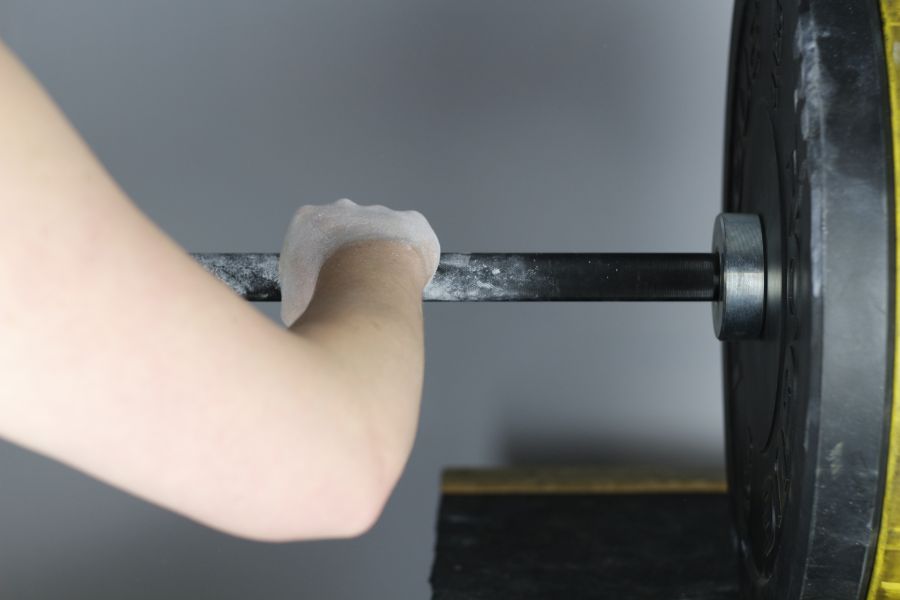A clean and well-maintained barbell is essential for longevity. Whether you’re a dedicated weightlifter or an occasional gym-goer, a dirty barbell is not only gross but cleaning also helps to prevent rust, corrosion, and wear. Here’s how you do it, it’s pretty easy.
Wipe down your barbells after every use. For periodic cleaning, use a damp cloth with a mild detergent to clean the whole bar. Then use a soft brush on stubborn dirt and grime buildup, usually in the knurling. Make sure the bar is dried properly after cleaning to prevent corrosion.
In this guide, we’ll walk you through the step-by-step process of properly cleaning your barbell to keep it in top-notch condition.
Contents
Tools and Materials
Before diving into the cleaning process, gather the following tools and materials:
Step-by-Step Guide
Step 1: Preparing the Work Area
Put a mat/towel something protective down on the floor. You can clean the bar while on the rack to make things easier but if the bar is very dirty, some grime will come off and you want to catch that so it doesn’t get all over the floor.
Step 2: Removing Plates and Collars
Begin by unloading the barbell. Remove the weight plates and collars to make sure all the parts of the bar are accessible for cleaning.
Cleaning the bar with weights on them means you can’t clean the sleeves and makes moving it around to get to all the parts difficult.
Step 3: Brushing and Scrubbing
Prepare a small bucket with water and some detergent. First, make a (lint-free) cloth wet and wipe down all the surfaces. don’t get the cloth too wet, damp is fine. This gets rid of most of the sweat and residue on the flat surfaces.
If you notice there is grime left in the knurling, use the brush to knock it loose. Dip the brush in the bucket. Use the damp brush on the knurling to clean it out.
After the dirt and grime is loose, you’ll have to wipe down the shaft with a damp cloth again to remove all the particles from the bar.
On bars with fairly mild knurling, brushing might not even be necessary to properly clean everything. If it’s not necessary, don’t use a brush, especially on barbells with a coating. The coatings can wear out over time and anything abrasive will wear it out much faster.
If you have very sweaty hands and especially if you use chalk, using a brush will be necessary.

Step 4: Cleaning the Sleeves
Clean the barbell sleeves, where the weight plates and collars are placed. Use a cloth to remove any dirt or debris. Usually, the sleeves are easy to clean since you rarely touch them so you won’t need a brush.
A wipe down of the sleeves with a damp cloth even without detergent will usually be enough. If you sometimes touch the sleeves, for example for landmine presses, cleaning the sleeves with a cloth and some detergent water will get rid of any oils and grease from your hands.
Get any dust and dirt from the end-caps as well. You don’t want that to get into the bearings. Dusty bearings don’t spin as smoothly as they should.
TIP: If the sleeves are dirty on your barbell, that dirt is also on the plates. Wipe down the inside of the holes of the weight plates to prevent more dirt from getting onto your sleeves again.
Step 5: Drying and Preventing Rust
After cleaning, use towels to dry the entire barbell, including the knurling and sleeves. This is especially important on bare metal bars or ones where the coating has worn. They can rust easily if left a little wet.
To prevent rust, apply a light layer of barbell oil or lubricant to the bar’s surface. This protective layer will help repel moisture and preserve the barbell’s finish. 3-in-1 oil is good for this purpose. Use a clean cloth, apply oil to the cloth, and rub it all over the bar.
Maintenance Tips
- Wipe-down: Wipe down your barbell, especially the shaft, with some tissues or dry cloth after use. Especially on bare metal bars, this will reduce the chance of corrosion forming dramatically. It also reduces grime build-up on all bars.
- Regular Cleaning: Set a schedule for regular barbell cleaning to prevent the buildup of grime and debris. Especially the grime in the knurling is a breeding ground for bad things and that’s exactly the part you’re touching every time!
- Store Properly: When not in use, store the barbell in a dry and clean environment to avoid unnecessary exposure to moisture. Properly coated and protected barbells can handle much more moisture than bare bars.
- Inspect Regularly: Periodically inspect your barbell for signs of rust, wear, or damage. Address any issues promptly to prevent further deterioration.

